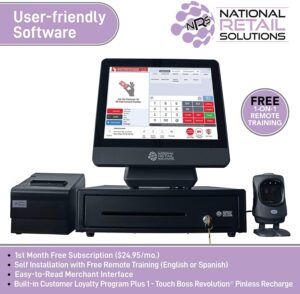
Welcome to our video on effective inventory management strategies for a combined convenience store and online shopping business. Managing inventory is a critical aspect of running and growing a business, and it becomes even more complex when you have both a physical store and an online platform. In this video, we will explore proven strategies and best practices to help you optimize your inventory management processes, meet customer demands, and increase profitability. We will discuss techniques for determining optimal stock levels, forecasting demand accurately, and implementing efficient inventory tracking and control systems. Balancing inventory quantities is essential to meet customer demand while avoiding overstocking or stockouts. By analyzing historical data, market trends, and customer behavior, you can make informed predictions about future demand. Implementing a robust inventory tracking system that enables real-time visibility of your stock across both your convenience store and online shopping platforms is crucial. Efficient reordering processes, including setting reorder points, implementing automated reorder notifications, and establishing strong relationships with suppliers, ensure timely replenishment of stock and prevent stockouts. Additionally, effective strategies to identify and mitigate potential sources of shrinkage, such as theft, damage, and spoilage, will protect your inventory and reduce financial losses. By implementing these inventory management strategies, you can improve the overall efficiency of your combined convenience store and online shopping business, ensuring optimal stock levels, accurate demand forecasting, streamlined inventory tracking, and proactive loss prevention, resulting in increased customer satisfaction and greater profitability.
Introduction to Inventory Management
Inventory management plays a crucial role in the success of any business, and understanding its importance is essential. Effective inventory management ensures that you have the right products in the right quantities to meet customer demand while minimizing costs and maximizing profitability. In this article, we will explore various aspects of inventory management and discuss key strategies for optimizing your inventory processes.
Determining Optimal Stock Levels
Determining optimal stock levels is a critical aspect of inventory management. Carrying excess stock ties up precious capital and storage space, while carrying too little stock can lead to stockouts and lost sales. The key is to strike a balance by accurately estimating demand and setting appropriate reorder points.
To determine optimal stock levels, you need to consider factors such as historical sales data, lead times, and safety stock. Historical sales data provides insights into demand patterns, allowing you to identify trends, seasonality, and potential fluctuations. Lead times are the time it takes to replenish stock after placing an order. By factoring in lead times, you can avoid stockouts. Safety stock acts as a buffer that helps mitigate unexpected increases in demand or delays in procurement.
By analyzing these factors, you can project future demand and set reorder points that ensure you have sufficient stock without excessive surplus. Utilizing inventory management tools and software can greatly aid in this process, streamlining your calculations and providing real-time visibility into stock levels.
Accurate Demand Forecasting
Accurate demand forecasting forms the foundation of effective inventory management. By analyzing historical data, market trends, and customer behavior, you can make informed predictions about future demand for your products.
There are various methods and tools available to help you forecast demand accurately. Time series analysis, which involves analyzing past sales data to identify patterns and trends, is commonly used. Another approach is to track industry-specific metrics and external factors that may impact demand, such as seasonal changes, economic indicators, and competitor analysis.
Collaboration with suppliers, distributors, and retailers can also provide valuable insights into demand. Sharing information and data can lead to improved accuracy in forecasting and help avoid stockouts or overstocking.

Importance of Inventory Tracking
Inventory tracking is crucial for maintaining accurate records of stock levels, product locations, and other related information. It allows you to monitor inventory movement, identify potential issues, and make informed decisions regarding replenishment and reordering.
By implementing an effective inventory tracking system, you can address issues such as shrinkage, stock inaccuracies, and order fulfillment delays. It enables you to track inventory across various locations, be it warehouses, retail stores, or online channels. This visibility into stock levels helps minimize stockouts and prevents excess inventory buildup, improving customer satisfaction and reducing costs.
Managing Inventory Across Channels
In the era of omnichannel retail, managing inventory across different sales channels is vital. Customers expect a seamless shopping experience across online and offline platforms, and inventory availability plays a significant role in meeting their expectations.
Centralizing inventory management across channels allows for better coordination and prevents overselling or stockouts. By integrating inventory systems, you can have real-time visibility into stock levels across all channels and implement automated systems to update stock counts and prevent selling out-of-stock items.
Optimizing Reordering Processes
Efficient reordering processes are essential to ensure timely procurement of stock and avoid disruptions in the supply chain. By optimizing reordering processes, you can reduce lead times, enhance cash flow, and minimize the risk of stockouts.
One method to optimize reordering processes is by implementing a Just-in-Time (JIT) inventory management approach. With JIT, you order and receive inventory only when it is needed, reducing storage costs and the risk of obsolescence. JIT requires accurate demand forecasting, robust supplier relationships, and streamlined logistics to function effectively.
Additionally, setting up automated reorder systems or utilizing inventory management software can simplify the reordering process, ensuring that stock is replenished when necessary without manual intervention.

Identifying and Mitigating Shrinkage
Shrinkage refers to the loss of inventory due to theft, damage, or other factors. It can significantly impact your bottom line if not addressed promptly. Implementing measures to identify and mitigate shrinkage is crucial for effective inventory management.
Regular inventory audits and cycle counts help uncover discrepancies and identify areas of concern. By comparing physical stock levels with recorded data, you can identify and investigate any discrepancies, taking appropriate actions to rectify the situation. Utilizing security measures such as surveillance cameras, access control, and employee training can also deter theft and reduce shrinkage.
Collaboration with suppliers and partners can also assist in identifying sources of shrinkage within the supply chain. Adopting robust inventory management systems that track inventory movement, enable tracking of individual items, and generate comprehensive reports can further aid in identifying and mitigating shrinkage.
Improving Efficiency Through Strategies
Efficiency is a crucial aspect of inventory management as it directly impacts productivity, cost-effectiveness, and customer satisfaction. By implementing certain strategies, you can streamline processes and improve efficiency throughout the inventory management lifecycle.
One strategy is to implement ABC analysis, which categorizes items based on their value and significance. This classification allows you to prioritize inventory management efforts and allocate resources accordingly. For example, high-value items with high demand can be closely monitored, while low-value items with low demand can be managed at a more relaxed pace.
Another strategy is to implement cross-docking, a logistics practice that involves unloading incoming goods from a supplier and quickly loading them onto outbound vehicles for immediate delivery. Cross-docking reduces the need for storage space and minimizes handling, speeding up order fulfillment and reducing costs.
Implementing a Robust Inventory Tracking System
To effectively manage inventory, it is crucial to implement a robust inventory tracking system. This system should incorporate software, hardware, and processes that streamline inventory management and provide real-time visibility into stock levels.
Leveraging inventory management software enables automated tracking of stock levels, sales, and reordering processes. Barcode scanners and RFID technology can be used to track individual items, providing accurate and up-to-date information on their locations and movements.
It is also essential to establish standardized processes and workflows that ensure consistency and accuracy in inventory tracking. Training employees on these processes and regularly reviewing and updating them as needed will help optimize inventory management efficiency.

Conclusion
Inventory management is a vital aspect of running a successful business. By determining optimal stock levels, accurately forecasting demand, tracking inventory, and implementing efficient processes, you can effectively manage your inventory, minimize costs, and maximize profitability. Remember, implementing a robust inventory management system is key to ensuring accuracy, visibility, and streamlined operations throughout your supply chain. Embrace these strategies and watch your inventory management practices become a significant driver of success in your business.
In this video, we will discuss effective inventory management strategies specifically for a combined convenience store and online shopping business. Managing inventory is crucial for the success and growth of your business, especially when you have both a physical store and an online platform. We will provide you with proven strategies and best practices to optimize your inventory management processes, meet customer demands, and increase profitability. Our focus will be on techniques to determine optimal stock levels, accurately forecast demand, and implement efficient inventory tracking and control systems.





Leave a Reply